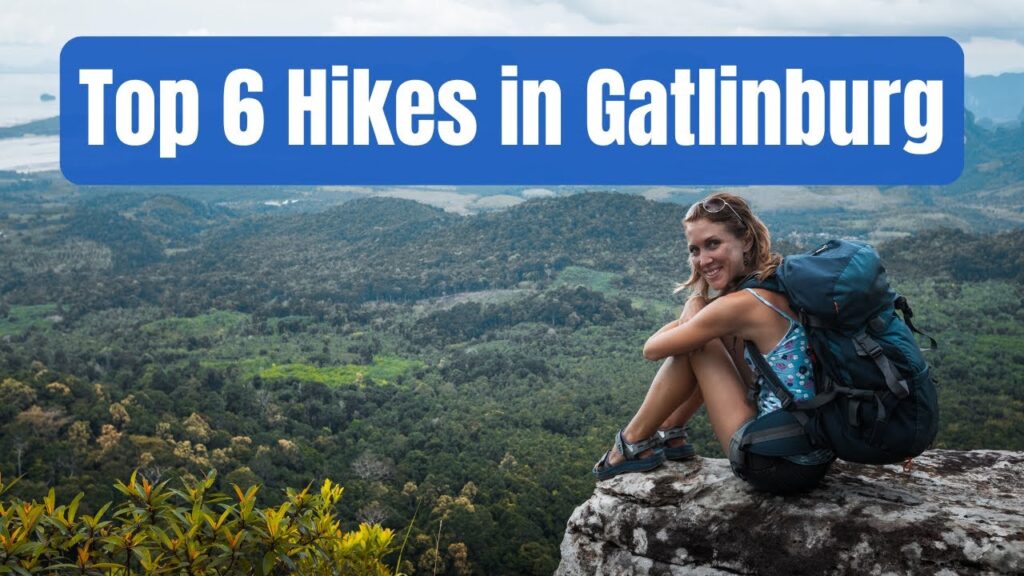6 Must-Do Hikes in the Great Smoky Mountains: A Gatlinburg Adventure Guide
There’s something magical about lacing up your hiking boots and hitting the trails in the Great Smoky Mountains. As someone who’s been exploring these misty peaks for years, I can tell you that Gatlinburg serves as the perfect gateway to some of the most breathtaking hikes in America’s most visited national park.
Whether you’re planning your first Smokies adventure or returning for another dose of mountain magic, I’ve put together my absolute favorite trails that showcase the best of what this natural wonderland has to offer.
Why Hiking in the Smokies Should Top Your Gatlinburg Itinerary
Before we hit the trails, let me share why hiking here is so special. The Great Smoky Mountains National Park boasts over 800 miles of maintained trails, each offering a unique glimpse into one of the most diverse ecosystems in North America. From cascading waterfalls to panoramic mountain views and ancient forests, these trails tell the story of an ancient landscape.
The best part? Many of these incredible hikes are just minutes from downtown Gatlinburg, making them easily accessible for visitors of all experience levels.
My 6 Favorite Smoky Mountain Hikes Near Gatlinburg
1. Alum Cave Trail to Mount LeConte
This might be my all-time favorite hike in the park. The trail to Alum Cave is spectacular on its own (about 2.5 miles one-way), but continuing to the summit of Mount LeConte rewards you with some of the most magnificent views in the Smokies.
What makes it special:
- Pass through Arch Rock, a natural formation where steps have been carved through the rock
- Experience the drama of Alum Cave Bluffs, a massive concave cliff
- If you go all the way to LeConte, you’ll climb to the third-highest peak in the Smokies
Insider tip: Start early! This popular trail gets crowded, especially during summer and fall weekends.
2. Chimney Tops Trail
Short but steep, the Chimney Tops trail packs a punch at just 2 miles each way. The trail underwent rehabilitation after the 2016 wildfires, but still offers an incredible experience with some of the best views-to-effort ratio in the park.
What to expect:
- A challenging climb with over 1,400 feet of elevation gain
- Newly constructed observation platform near the summit
- Spectacular 360-degree views of surrounding mountains
3. Laurel Falls Trail
If you’re hiking with kids or looking for something more accessible, Laurel Falls is your go-to. This paved 2.6-mile roundtrip trail leads to a gorgeous 80-foot waterfall that cascades in multiple tiers.
I’ve hiked this trail dozens of times, and it never disappoints – especially in spring when wildflowers dot the path or after heavy rain when the falls are roaring.
4. Grotto Falls via Trillium Gap Trail
This moderate 2.6-mile roundtrip hike offers something truly unique – the opportunity to walk behind a waterfall! The trail meanders through old-growth forest and is especially beautiful in spring when trillium and other wildflowers carpet the forest floor.
During summer months, this shaded trail provides a cool escape from Gatlinburg’s heat, and the mist from the falls creates a refreshing natural air conditioner.
5. Andrews Bald via Forney Ridge Trail
For those willing to drive to Clingmans Dome parking area (about an hour from Gatlinburg), Andrews Bald offers one of the most rewarding high-elevation experiences in the park. This 3.5-mile roundtrip hike takes you to a grassy meadow with stunning views of the southern Smokies.
What makes it memorable:
- Vibrant flame azaleas and rhododendron blooms in June
- Panoramic views extending into North Carolina
- High-elevation spruce-fir forest that feels like the Pacific Northwest
6. Charlies Bunion via Appalachian Trail
For experienced hikers looking for a challenge, this 8-mile roundtrip trek along the famous Appalachian Trail delivers dramatic rocky outcroppings and some of the most breathtaking views in the eastern United States.
Starting from Newfound Gap, you’ll follow the white blazes of the AT, gaining moderate elevation before reaching the exposed rock outcropping known as Charlies Bunion. The sweeping vistas make every step worthwhile.
Essential Tips for Hiking in the Smoky Mountains
| Season | Pros | Cons | Best Hikes |
|---|---|---|---|
| Spring (Mar-May) | Wildflowers, flowing waterfalls | Unpredictable weather, potential storms | Grotto Falls, Laurel Falls |
| Summer (Jun-Aug) | Long daylight hours, lush forests | Heat, humidity, afternoon thunderstorms | Higher elevation trails: Andrews Bald, Mt. LeConte |
| Fall (Sep-Nov) | Spectacular foliage, comfortable temperatures | Crowded trails, limited parking | Chimney Tops, Charlies Bunion |
| Winter (Dec-Feb) | Solitude, clear views, no insects | Ice, snow, closed roads | Lower elevation trails, Laurel Falls |
No matter when you visit, remember these hiking essentials:
- Wear layers and proper footwear
- Carry plenty of water (at least 2 liters per person for longer hikes)
- Pack snacks and a basic first aid kit
- Check weather forecasts before heading out
- Let someone know your hiking plans
- Start early to find parking and avoid afternoon storms in summer
When to Hit the Trails
After years of hiking these mountains in all seasons, I’ve found that mid-week mornings offer the best experience. For popular trails like Laurel Falls or Alum Cave, arriving at the trailhead before 9 am can make the difference between having to park a mile away or finding a spot right at the trailhead.
If fall foliage is your goal, the higher elevations typically peak in early October, while lower elevations near Gatlinburg reach their colorful prime in late October. Just be prepared for crowds during these peak weeks.
Beyond the Trails: Making the Most of Your Gatlinburg Adventure
After a day of hiking, Gatlinburg offers plenty of ways to relax and refuel. My personal tradition is stopping at a local pancake house for breakfast before hitting the trails, then rewarding myself with

